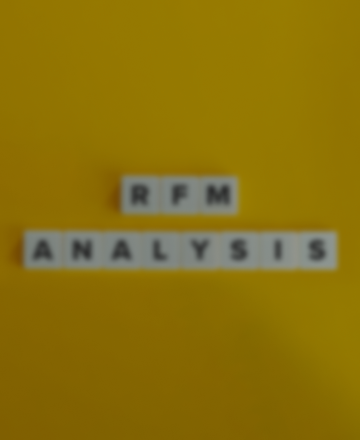The RFM model is a data-driven marketing technique utilized by businesses to analyze and categorize their customer base according to their purchasing behavior. By evaluating three key dimensions – recency of purchase, frequency of purchase, and monetary value of purchases – the RFM model helps businesses gain insights into customer engagement, loyalty, and potential value.
General idea of any RFM model is a segmentation of the active customer base so that business can interact with a customer based on the segment he or she belongs to. As a rule, RFM models score customers via three main attributes:
- Recency – when was the last time a customer made a purchase.
- Frequency – how often a customer made purchases.
- Monetary – how much money a customer spent.
- Segmentation: The RFM model is used to segment customers into distinct groups based on their RFM scores. Each customer is assigned a score for recency, frequency, and monetary value, often on a scale of 1 to 5 (with 5 being the highest). These scores are then used to group customers into segments such as “Champions,” “Loyal Customers,” “Potential Loyalists,” “Recent Customers,” and “Lost Customers.”
- Targeting High-Value Segments: By analyzing the RFM scores, businesses can identify high-value customer segments that warrant special attention. For example, “Champions” are customers who have high scores in all three dimensions and are considered the most valuable customers. These segments can then be targeted with personalized marketing campaigns to maximize their value to the business.
- Personalizing Marketing Efforts: The RFM model enables businesses to personalize their marketing efforts based on each customer’s behavior. By understanding a customer’s RFM profile, businesses can tailor their communications and offers to be more relevant and engaging, increasing the likelihood of customer retention and repeat purchases.
- Improving Customer Relationships: By using the RFM model to understand customer behavior, businesses can improve their relationships with customers. By identifying and addressing the needs of different customer segments, businesses can increase customer satisfaction and loyalty, leading to long-term relationships and increased profitability.
In conclusion, the RFM model is a powerful tool for businesses looking to better understand and segment their customer base. By analyzing recency, frequency, and monetary value, businesses can gain valuable insights into customer behavior and tailor their marketing efforts to maximize engagement and profitability.
General Recency
Recency refers to the time elapsed since a customer’s last purchase. Customers who have made a purchase more recently are often considered more engaged and responsive to marketing efforts.
Generally it makes sense to build R (Recency) Index (usually it is set in the range from 1 to 5, like all other indices) around the latest activity date of each customer. Having this kind of data left with only one decision to make: definition of a bucketing logic for transforming raw activity data into R Index. For example, you can simply divide the review period into 5 equal parts and bucket R Index according to new period borders you have.
General Frequency
Frequency indicates how active a customer was in a reviewing period i.e. how many valuable actions (purchases, transactions or other actions we consider valuable) did he make.
As a main metric to build a F (Frequency) Index around it is common to use transactions or orders. But depending on specifics of a given business other data sources could also come in handy. Speaking of actual calculations, logic is still the same: you need to define border values for each Frequency index and transform customers frequency metric into F Index using them.
General Monetary
Monetary value signifies the total amount of money a customer has spent on purchases. Customers who have spent more are typically more profitable and may warrant special attention from a marketing perspective.
M (Monetary) Index is fully based on revenue of each customer and is similar to Frequency index in terms of calculation logic.














